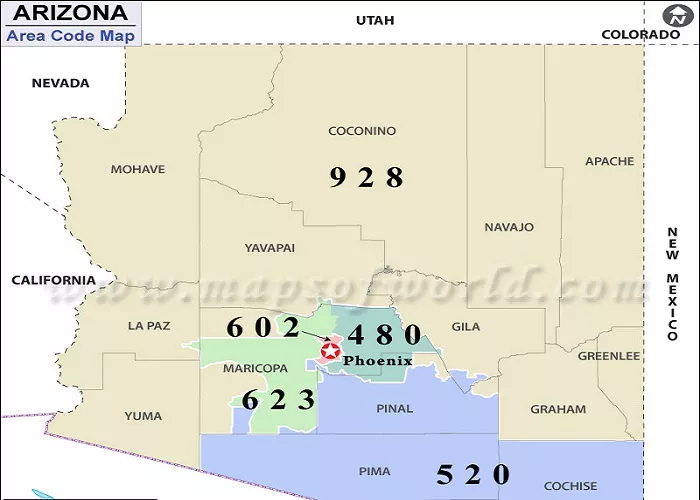Arizona is a state in the southwestern region of the United States, known for its diverse landscapes, rich cultural heritage, and growing economy. When it comes to telecommunications, Arizona is served by several area codes that correspond to different regions within the state. Understanding these area codes can provide insights into the state’s geography, demographics, and development.
Overview of Arizona’s Area Codes
Arizona is served by five primary area codes: 602, 480, 623, 520, and 928. These area codes are distributed across various regions of the state, often aligning with major cities and metropolitan areas.
Area Code 602
- Region Covered: Central Phoenix
- History: 602 was the original area code assigned to the entire state of Arizona in 1947. Due to population growth and increased demand for telephone numbers, the area code was split in 1995, with 602 being retained for the Phoenix metropolitan area.
Area Code 480
- Region Covered: East Valley of the Phoenix metropolitan area, including cities like Mesa, Chandler, and Scottsdale
- History: Introduced in 1999 as a split from 602 to accommodate the growing population in the eastern suburbs of Phoenix.
Area Code 623
- Region Covered: West Valley of the Phoenix metropolitan area, including cities like Glendale, Peoria, and Surprise
- History: Also introduced in 1999 alongside 480, splitting from 602 to serve the western suburbs of Phoenix.
Area Code 520
- Region Covered: Southern Arizona, including Tucson, Nogales, and Sierra Vista
- History: Created in 1995 from a split of the original 602 area code to serve the southern portion of the state.
Area Code 928
- Region Covered: Northern and western Arizona, including Flagstaff, Yuma, and Kingman
- History: Established in 2001 from a split of the 520 area code to serve the northern and western regions of Arizona.
Geographical Distribution
The distribution of area codes in Arizona reflects the state’s geographical and population centers.
- Phoenix Metropolitan Area: Served by area codes 602, 480, and 623, reflecting the city’s central, eastern, and western regions, respectively.
- Southern Arizona: Area code 520 covers this region, including Tucson, the state’s second-largest city.
- Northern and Western Arizona: Area code 928 encompasses this area, including cities like Flagstaff and Yuma.
Cultural and Economic Significance
The allocation of area codes in Arizona is not just a matter of telecommunications; it also reflects the state’s cultural and economic landscapes.
- Phoenix Area (602, 480, 623): As the state’s capital and largest city, Phoenix is a hub for government, business, and culture. The division into three area codes corresponds to the city’s expansive growth and diverse communities.
- Tucson Area (520): Home to the University of Arizona, Tucson is a center for education and technology. The 520 area code signifies the region’s unique identity within the state.
- Northern and Western Arizona (928): This area is known for its natural beauty, including the Grand Canyon, and is significant for tourism and agriculture. The 928 area code encompasses these diverse regions.
Ecological Considerations
Arizona’s varied topography, from deserts to forests, influences population distribution and, consequently, area code assignments.
- Desert Regions: The Sonoran Desert in the south supports cities like Phoenix and Tucson, leading to higher population densities and the need for multiple area codes.
- Mountainous and Forested Areas: Northern Arizona’s forests and mountains have lower population densities, resulting in a single area code (928) covering a vast area.
Conclusion
Arizona’s area codes—602, 480, 623, 520, and 928—offer more than just a means of telephone communication; they provide a window into the state’s geographical layout, cultural hubs, economic centers, and ecological zones. Understanding these area codes helps in appreciating the diversity and complexity of Arizona’s regions.

